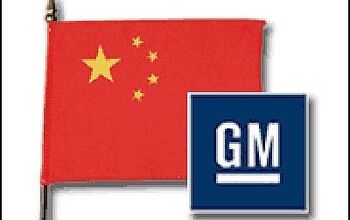Chinese Car Sales Break Sound Barrier

China’s auto sales have most likely broken the 10 million unit sound barrier at the time of this typing. This according to educated estimates of the China Association of Automobile Manufacturers (CAAM) via Gasgoo. The association expects annual sales for 2009 to surpass 12 million.
In September, China’s auto sales had soared 78 percent (compared to September of the prior year) to 1.33m units. Sales of passenger cars, including sedans, SUVs and MPVs, rose 83.6 percent to 1.02m units. September marked the seventh straight month in a row that China’s car sales exceeded one million units a month.
For the first nine months of the year, China’s vehicle sales increased 34.2 percent.
Beginning in January 2009, China’s total car sales exceeded those of the United States. The lead of the Chinese market has extended ever since. China’s Global Times reports that during the recent eight day October holidays, 10,000 cars were registered in Beijing alone. China’s capital, which had one million registered motor vehicles in 1997, now has 3.88m
Analysts already warn that 2010 growth will be lower than the record numbers in 2009. According to the analysts cited by Gasgoo, “the industry will still grow, albeit at a slower pace.” The second half of 2008 was disappointing for China, comparisons with last year show huge increases. Next year, it will be harder to exceed current record numbers.
China’s GM doesn’t share this cautious opinion. “We expect our sales to continue to grow, even a little faster than the industry next year,” GM China’s President Kevin Wale told reporters. In the first nine months of 2009, GM China’s vehicle sales jumped 55.6 percent from a year earlier, hitting a record with 1,292,549 units sold. GM’s Henderson believes that China will stay ahead of the USA for quite some times. “It’s not a blip,” Henderson said to AFP. Quite perceptive.
Ford’s Mulally hopes that total U.S. industry sales will be 11 million in 2009, rising to 12.5 million in 2010 and to about 14.5 million in 2011. At that rate, the U.S.A. will never catch up with China.

Bertel Schmitt comes back to journalism after taking a 35 year break in advertising and marketing. He ran and owned advertising agencies in Duesseldorf, Germany, and New York City. Volkswagen A.G. was Bertel's most important corporate account. Schmitt's advertising and marketing career touched many corners of the industry with a special focus on automotive products and services. Since 2004, he lives in Japan and China with his wife <a href="http://www.tomokoandbertel.com"> Tomoko </a>. Bertel Schmitt is a founding board member of the <a href="http://www.offshoresuperseries.com"> Offshore Super Series </a>, an American offshore powerboat racing organization. He is co-owner of the racing team Typhoon.
More by Bertel Schmitt
Latest Car Reviews
Read moreLatest Product Reviews
Read moreRecent Comments
- Jeff Self driving cars are not ready for prime time.
- Lichtronamo Watch as the non-us based automakers shift more production to Mexico in the future.
- 28-Cars-Later " Electrek recently dug around in Tesla’s online parts catalog and found that the windshield costs a whopping $1,900 to replace.To be fair, that’s around what a Mercedes S-Class or Rivian windshield costs, but the Tesla’s glass is unique because of its shape. It’s also worth noting that most insurance plans have glass replacement options that can make the repair a low- or zero-cost issue. "Now I understand why my insurance is so high despite no claims for years and about 7,500 annual miles between three cars.
- AMcA My theory is that that when the Big 3 gave away the store to the UAW in the last contract, there was a side deal in which the UAW promised to go after the non-organized transplant plants. Even the UAW understands that if the wage differential gets too high it's gonna kill the golden goose.
- MKizzy Why else does range matter? Because in the EV advocate's dream scenario of a post-ICE future, the average multi-car household will find itself with more EVs in their garages and driveways than places to plug them in or the capacity to charge then all at once without significant electrical upgrades. Unless each vehicle has enough range to allow for multiple days without plugging in, fighting over charging access in multi-EV households will be right up there with finances for causes of domestic strife.


































Comments
Join the conversation
Ah, and GM just got billions of free cash. I'm feeling some anger, sadness and fear right now.